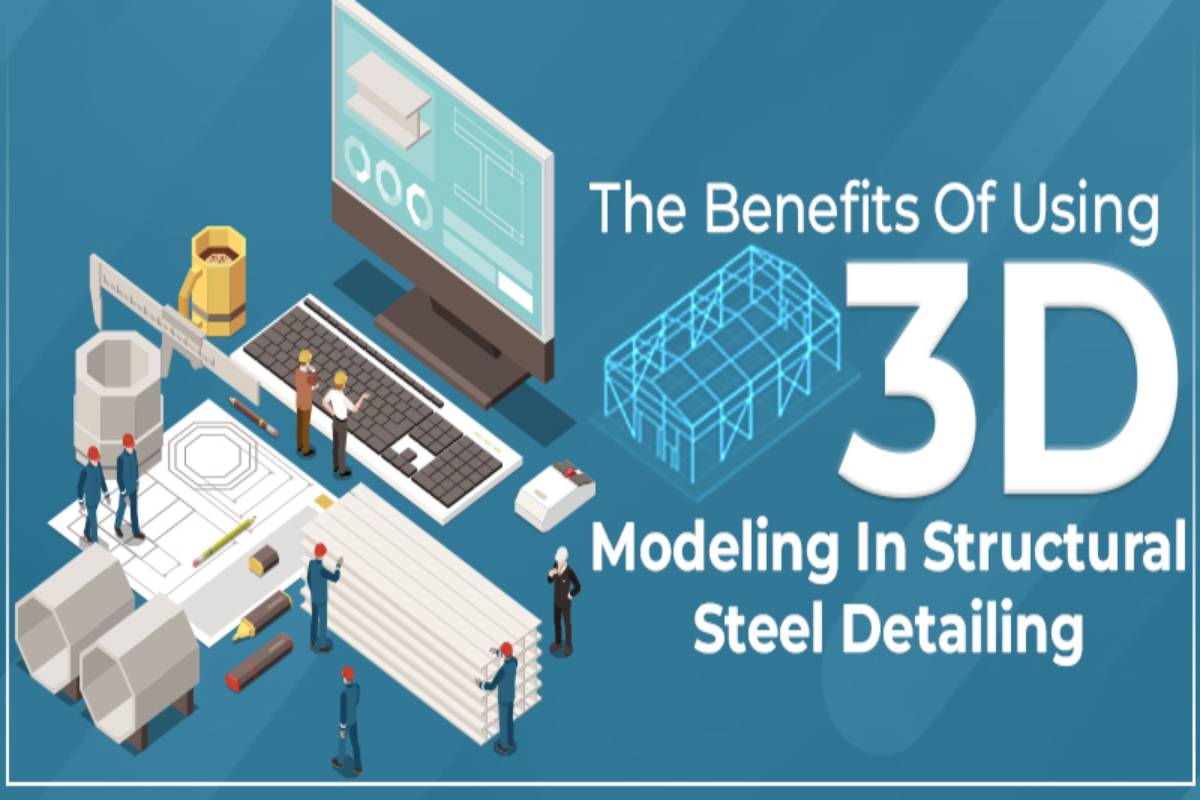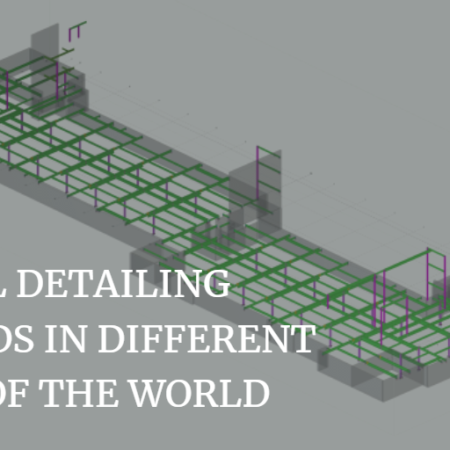Introduction
Staying ahead of the curve is critical in the ever-changing world of construction and engineering. 3D modelling is one technology that has had a huge influence on the business, and its benefits of 3D Modeling in steel details cannot be understated. In this article, we’ll look at the benefits of 3D modelling in steel details and how it may transform your projects.
Benefits of 3D Modeling in Steel Detailing

1. Improved Accuracy
One of the most noticeable Benefits of 3D modeling in steel details is the level of precision it provides. Traditional 2D designs can sometimes be interpreted incorrectly, resulting in inaccuracies and costly rework. You may design a virtual depiction of the steel structure with accurate measurements using 3D modelling, guaranteeing that every component fits precisely.
2. Better Visualization
3D modelling gives a clear and detailed visual depiction of the steel structure, making the project easier to grasp for all stakeholders. This improved visualization helps architects, engineers, and construction teams to communicate and collaborate more effectively.
3. Error Minimization
Human error is an unavoidable aspect of any project, but 3D modelling reduces the possibility of costly errors. You can discover clashes and conflicts in advance with realistic 3D models, eliminating the need for on-site adjustments and change orders.
4. Simplified Workflows
Steel detailing is made easier using 3D models. They serve as a comprehensive reference for all stages of the project, from design through manufacture and installation. This efficiency reduces downtime and speeds project schedules, saving time and money in the long run.
5. Cost-cutting measures
Steel detailing efficiency not only saves time, but also results in considerable cost savings. Fewer mistakes, less rework, and faster project completion all contribute to a healthier bottom line for the steel detailer as well as the whole project.
6. Improved Collaboration
In the construction sector, effective teamwork is critical. Team members may simply exchange 3D models, allowing everyone to work from the same set of data. This encourages a more collaborative environment, which leads to better project outcomes.
7. Design Versatility
Designers and engineers can experiment with many design alternatives using 3D modelling software. This adaptability can lead to more creative and cost-effective solutions, improving the overall project design.
8. Longevity
In the building industry, sustainability is becoming increasingly important. 3D modelling may aid in waste reduction and material optimization, making your projects more ecologically friendly.
Best Practices for Implementing 3D Modeling
Consider the following recommended practices to completely reap the benefits of 3D modelling in steel detailing:
Invest in Training: To maximize your team’s skills, ensure that it is well-trained in the use of 3D modelling software.
Keep Your Software and Hardware Up to Date: Keep your software and hardware up to date to take advantage of the newest features and advancements.
Collaboration: Encourage collaboration among team members and stakeholders to ensure a seamless flow of information.
Regular Quality Checks: Review and quality-check your 3D models on a regular basis to detect and rectify issues early in the process.
Data Security: Put in place strong data security procedures to safeguard your project’s information.
Conclusion
The advantages of 3D modelling in steel detailing are revolutionary, providing improved accuracy, visualization, error reduction, and cost savings. You may position your steel detailing projects for success by embracing this technology and implementing best practices, eventually delivering greater solutions to your clients while enhancing your productivity and profitability. Adopting 3D modelling is a game-changing move in the correct path if you want to stay at the forefront of the steel detailing business.





[…] thorough 2D and 3D drawings that provide a complete visual representation of the steel components and their exact dimensions is […]